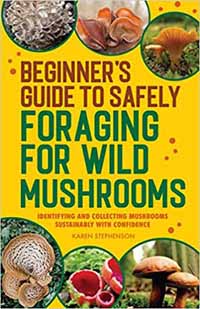

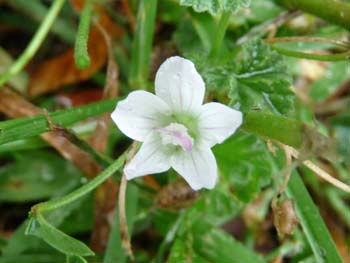
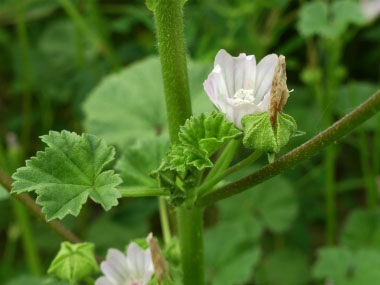
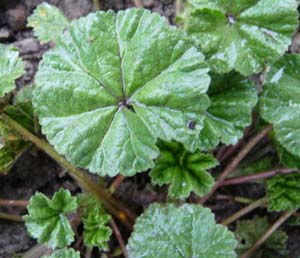
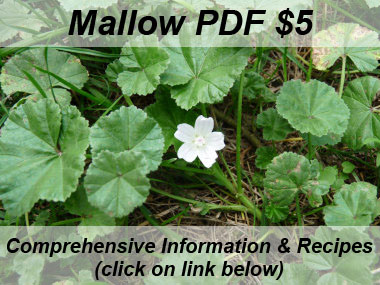
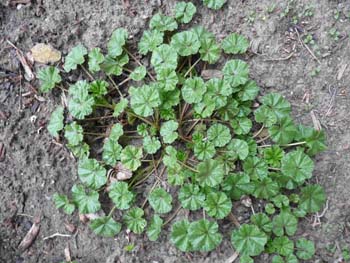
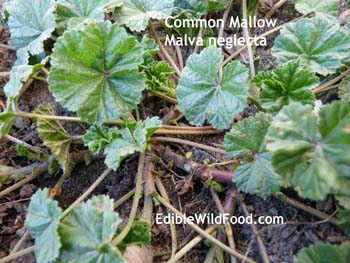
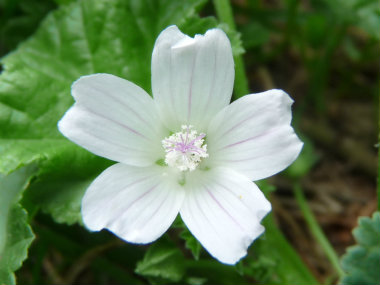
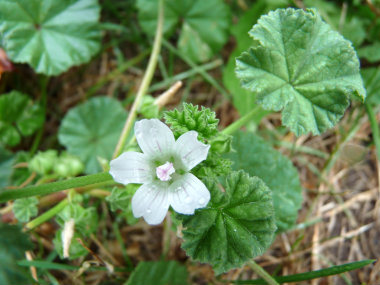
For comprehensive information (e.g. nutrition, health benefits, recipes, history, harvesting tips, etc.) please check out our Common Mallow PDF magazine.
The common mallow is in the Malvaceae family that include cotton, okra and hibiscus. The fruits are round and have cheese-like wedges which give the common mallow its nickname, the cheese plant. Common mallow is related to the marsh mallow plant which, as its name suggests, is where the first marshmallows came from. However, marshmallows were nothing as they are today. They were created as a medicinal treat for sore throats. Common mallow is an anti-inflammatory, diuretic, demulcent, emollient, laxative and an expectorant. Depending on location, the common mallow is a winter or summer annual or biennial.
Distinguishing Features
Common mallow freely branches at the base, with a prostrate growth habit. It is a low growing weed, with a deep fleshy tap root. The leaves are easy to identify as they are scalloped shaped.
Flowers
The flowers are borne either singly or in clusters in the leaf axils. They bloom from June to late autumn. They have 5 petals and are white, pinkish or lilac. On average, the flowers measure 1 to 1.5 cm (.39 to .59”) across.
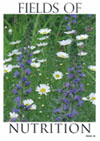 Fields
of Nutrition has medicinal benefits and vitamin/mineral content of Mallow.
Fields
of Nutrition has medicinal benefits and vitamin/mineral content of Mallow.
Leaves
Common mallow leaves are alternate, on long petioles, circular to kidney-shaped, toothed and shallowly lobed. They average 2 to 6 cm (.79 to 2.36”) wide. Short hairs are present on the upper and lower leaf surfaces, margins and petioles. Leaf venation is palmate, with several major veins radiating from the leaf base.
Height
This plant can grow anywhere from 10 to 60 cm (3.93 to 23”) in length, not height.
Habitat
The common mallow likes to grow in lawns, gardens, roadsides, waste areas and cropland. It originated in Europe, Asia, and Northern Africa. It has naturalized in the Americas and Australia. It prefers sunny locations.
Edible Parts
All parts of this plant are edible. The leaves can be added to a salad, the fruit can be a substitute for capers and the flowers can be tossed into a salad. When cooked, the leaves create a mucus texture very similar to okra and can be used to thicken soups and stews. Dried leaves can be used for tea. Mallow roots release a thick mucus when boiled in water. The thick liquid that is created can be beaten to make a meringue-like substitute for egg whites. Common mallow leaves are rich in vitamins A and C as well as calcium, magnesium, potassium, iron and selenium.
Other Name
Cheeseweed.
Similar Plants
Marshmallow.
To support our efforts please browse our store (books with health benefits, etc.).
Winter Survival Food Handbook

PDF Plant Magazines
Types of Wild Food
Geographic Zones Seasons
Disclaimer
EdibleWildFood.com is informational in nature. While we strive to be 100% accurate, it is solely up to the reader to ensure proper plant identification. Some wild plants are poisonous or can have serious adverse health effects.
We are not health professionals, medical doctors, nor are we nutritionists. It is up to the reader to verify nutritional information and health benefits with qualified professionals for all edible plants listed in this web site. Please click here for more information.
Why Edible Wild Food?
- Food costs are rising
- Free, wild food is readily abundant
- Wild food adds nutrition to your diet
- Wild food can help treat various medical conditions





